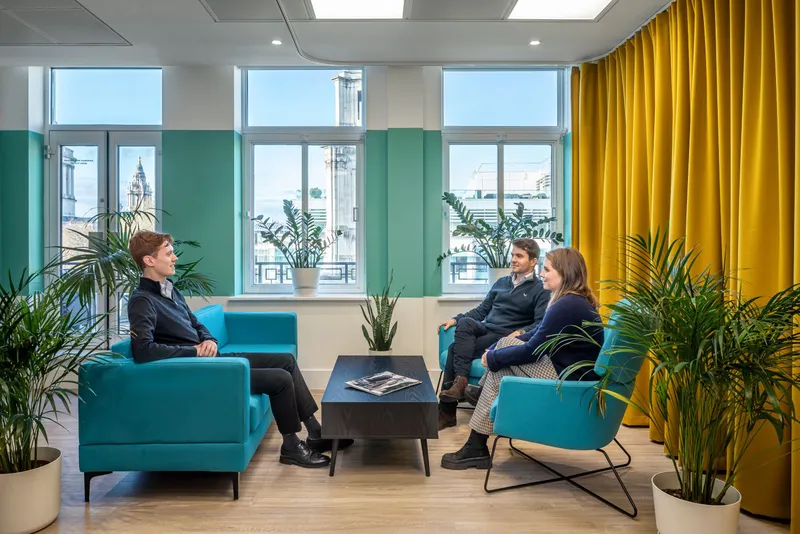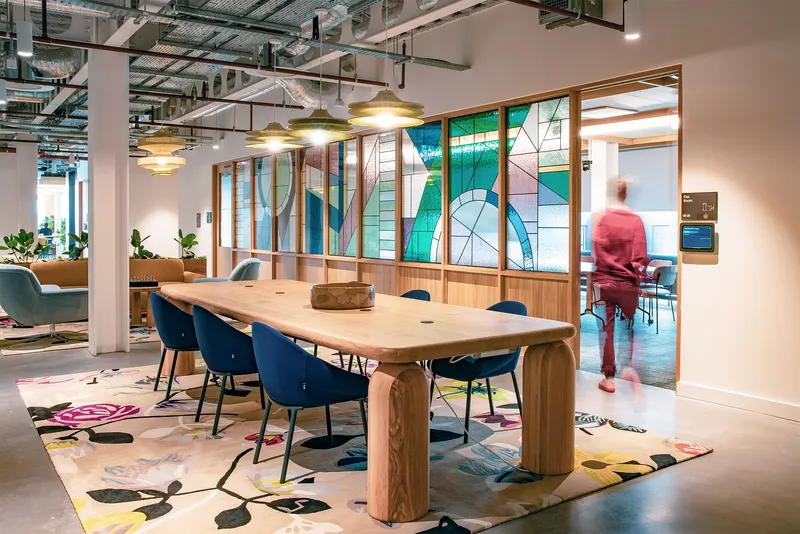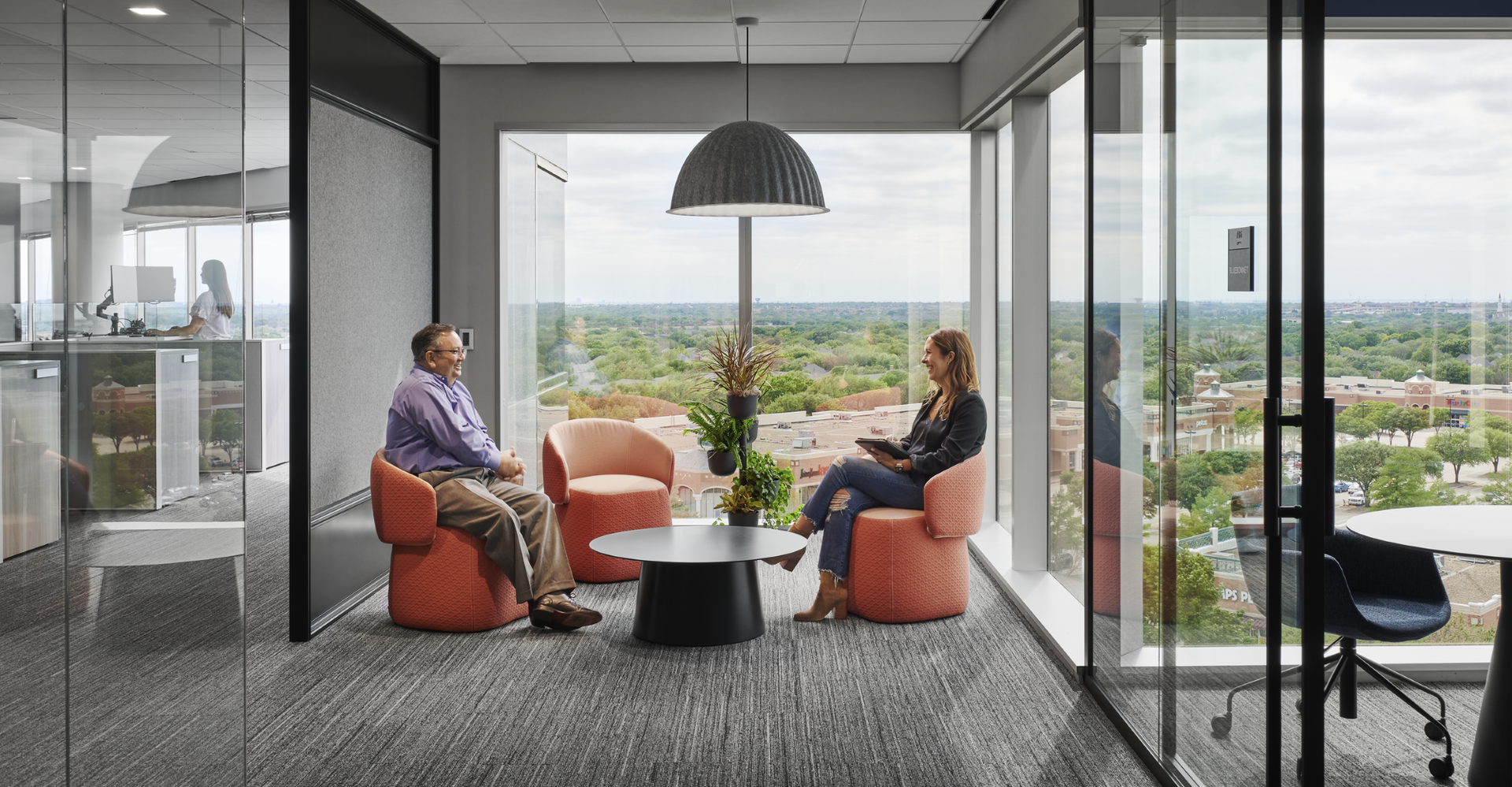
Theories of Design: Designing for Relationship Building Featuring Amber Wernick
Ask someone what they love most about their job, and chances are, they’ll say “the people.” And yet, in today’s world of hybrid schedules, digital tools, and siloed teams, the act of truly connecting at work has become something we can no longer take for granted.
“The U.S. Surgeon General has declared an epidemic of loneliness and social isolation,” says Amber Wernick, a senior associate at global architecture and design firm Perkins+Will. “And 1 in 5 employees worldwide feel lonely, according to Gallup’s State of the Global Workplace 2024 Report.” It’s a stark reminder that in our pursuit of efficiency and flexibility, we risk neglecting one of the most powerful aspects of the workplace: human relationships.
That’s exactly where Amber’s expertise comes in - redefining what the workplace is for, and reshaping it as a catalyst for connection, creativity, and community.
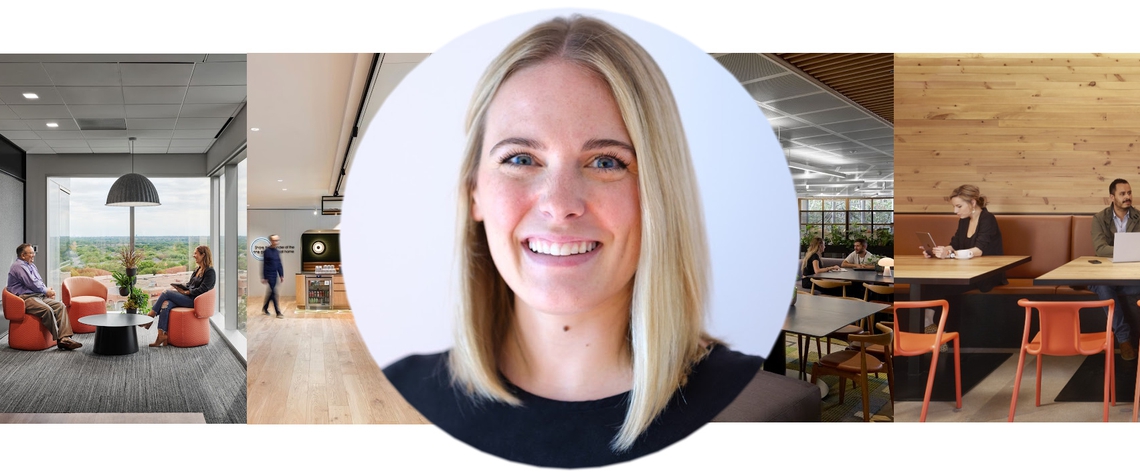
From Productivity Hubs to Social Engines
The workplace hasn’t always been designed with relationships in mind. “The traditional 20th-century workplace prioritized efficiency and productivity with cubicles and benching in dense open offices,” Amber explains. But by the early 2000s, especially in tech, design began evolving to attract and retain talent - ushering in cafés, lounges, and game rooms. Then came 2020.
“With employees proving they could be productive outside of the office, the workplace needed to redefine its purpose,” she says. “That’s when we really started to see companies prioritizing workplaces as spaces for in-person collaboration and relationship-building rather than just productivity hubs.”
In other words, the office became less about where work happens, and more about how relationships happen.
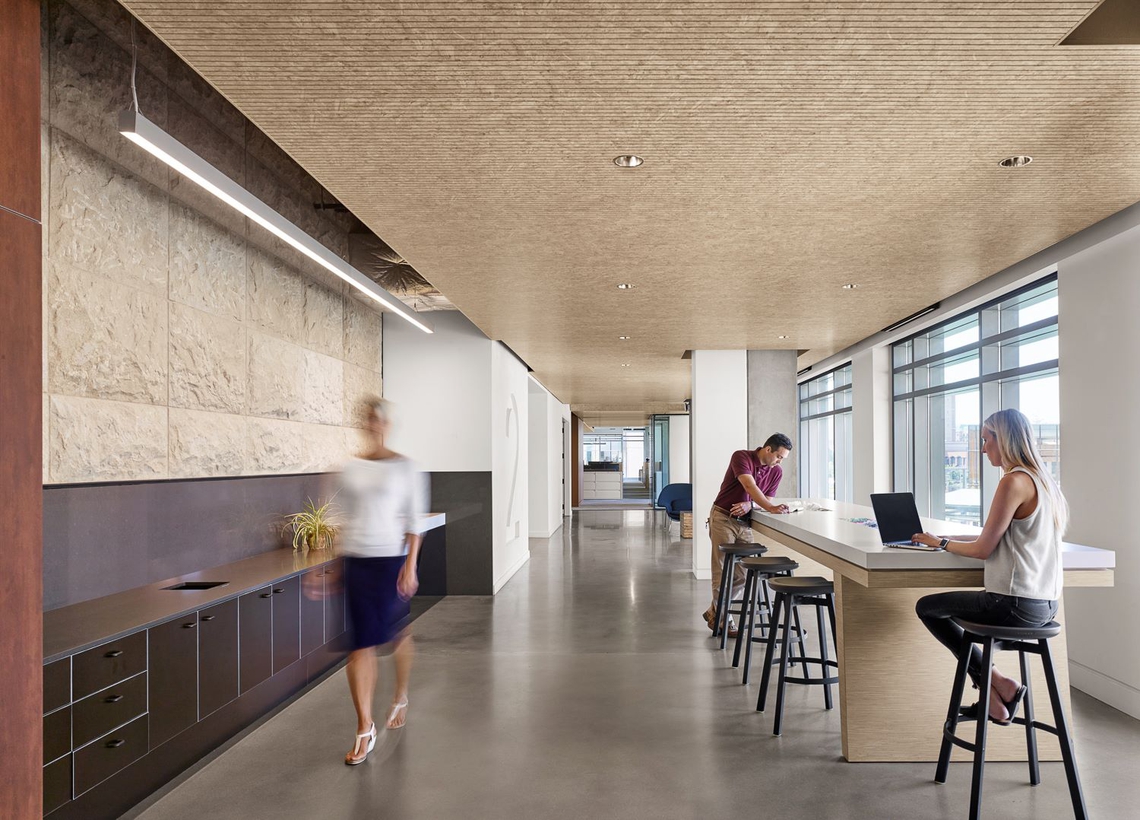
Designing for "Functional Inconvenience"
One of Amber’s go-to tools in this new paradigm? Something she calls functional inconvenience - and no, it’s not what it sounds like.
“It introduces minor obstacles to encourage beneficial behaviors such as social interaction,” she explains. Think fewer kitchenettes and instead, one central, well-designed kitchen to increase movement and chance encounters. “Spontaneous conversations between people who may never run into each other otherwise” are exactly the kinds of interactions she’s looking to spark.
She applies the same principle to seating. Rather than assigning desks, “free address seating allows employees to choose where they sit each day… [it] fosters cross-team collaboration and breaks down workplace silos.”
It’s a reminder that sometimes, making things slightly less convenient can lead to something more meaningful.
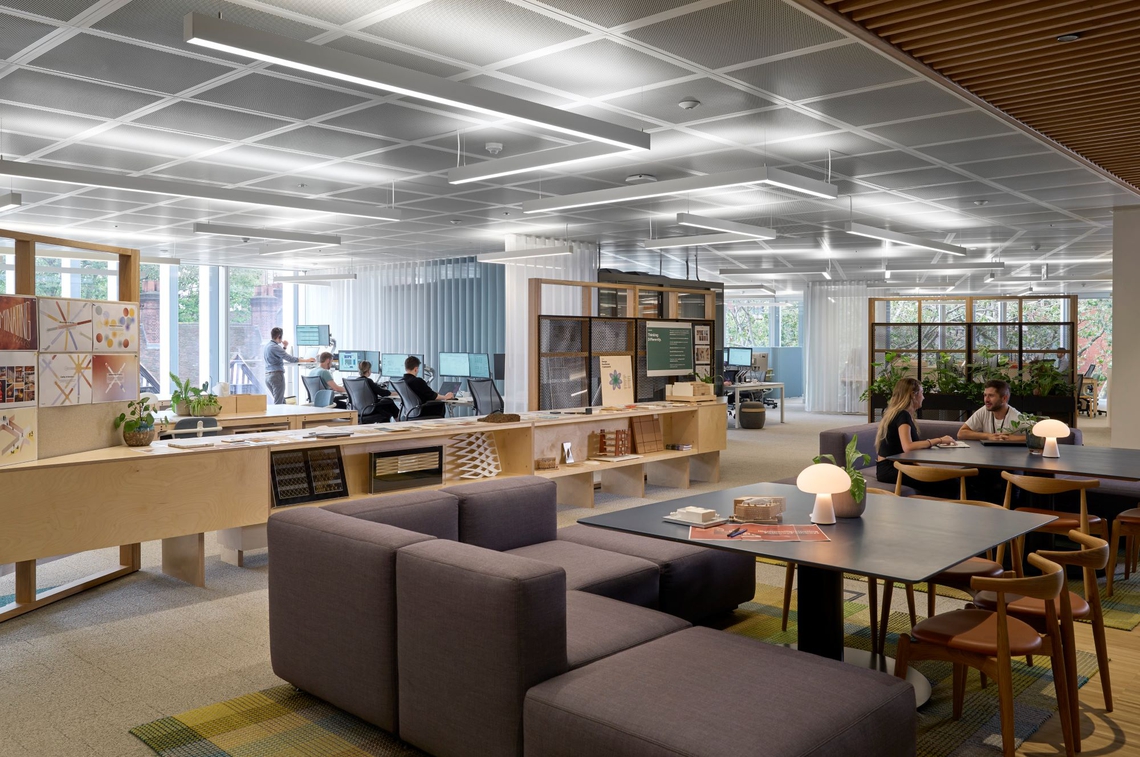
Photography credit \\ Nick Guttridge
Human-Centric, Research-Led Design
Amber’s projects begin not with a floorplan, but with deep, immersive research. “I always fight for a lengthy pre-design phase,” she says. That means moving beyond stakeholder interviews and engaging in everything from focus groups and surveys to observing and even shadowing employees. In one case, she even underwent onboarding as if she were a new employee at the client’s company.
“I also like to meet with the client’s HR and workplace experience teams to learn about the training, mentorship, and social activities they offer,” she adds. “This helps ensure the design aligns with the company’s existing relationship-building initiatives.”
This embedded approach ensures every solution is tailor-made - not just for the industry, but for the unique ecosystem of each organization.
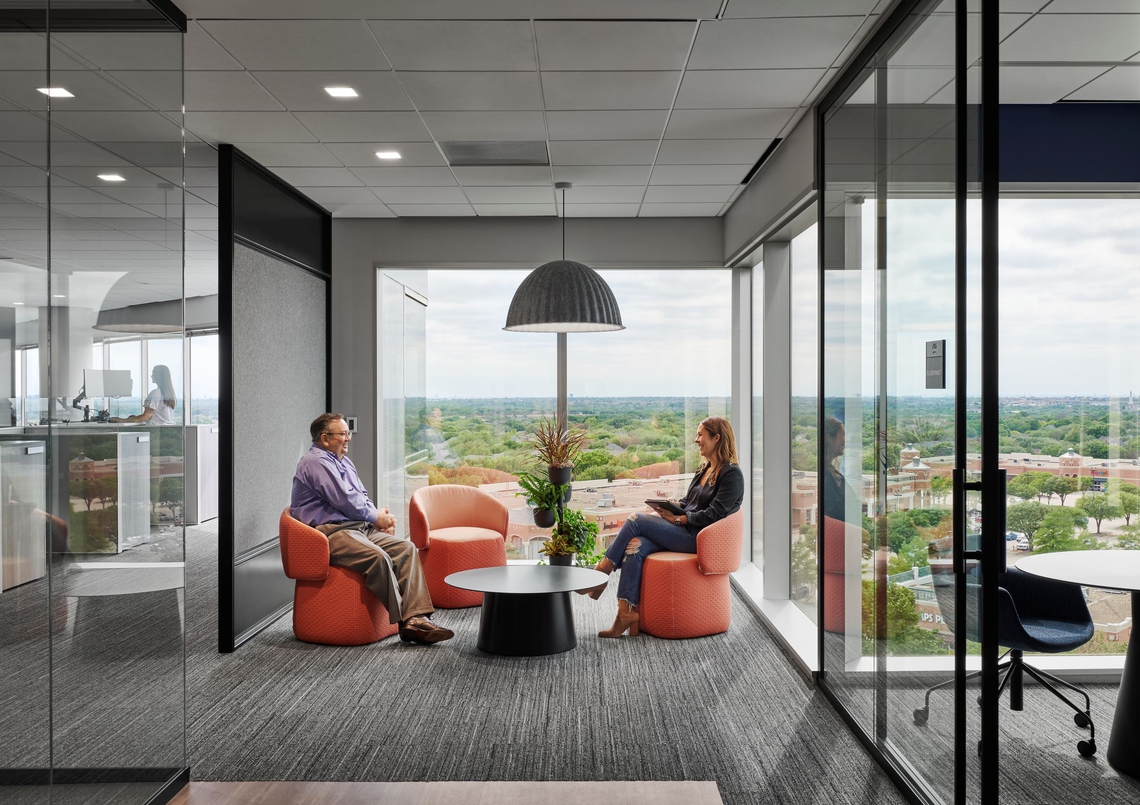
Spaces for Serendipity
If you picture a relationship-building space, your mind may jump to a busy café or lounge. But according to Amber, “intimate spaces for one-on-ones are just as, if not more, important.”
High-backed booths, for example, are perfect for informal chats that don’t require booking a meeting room. Amber also points out that while tech-enabled collaboration spaces are essential, so too are tech-free ones. “These spaces prioritize acoustics, privacy, and comfort to support in-person conversations.”
And then there are the unexpected places - like corridors.
“One of the most impactful social spaces I ever designed was a ‘collision corridor’—extra wide, with casual seating, booths, and hydration points,” she recalls. “Like moths to a flame, coffee and water along the corridor naturally drew people in.” These interstitial zones, often overlooked, are where spontaneous collisions turn into culture.
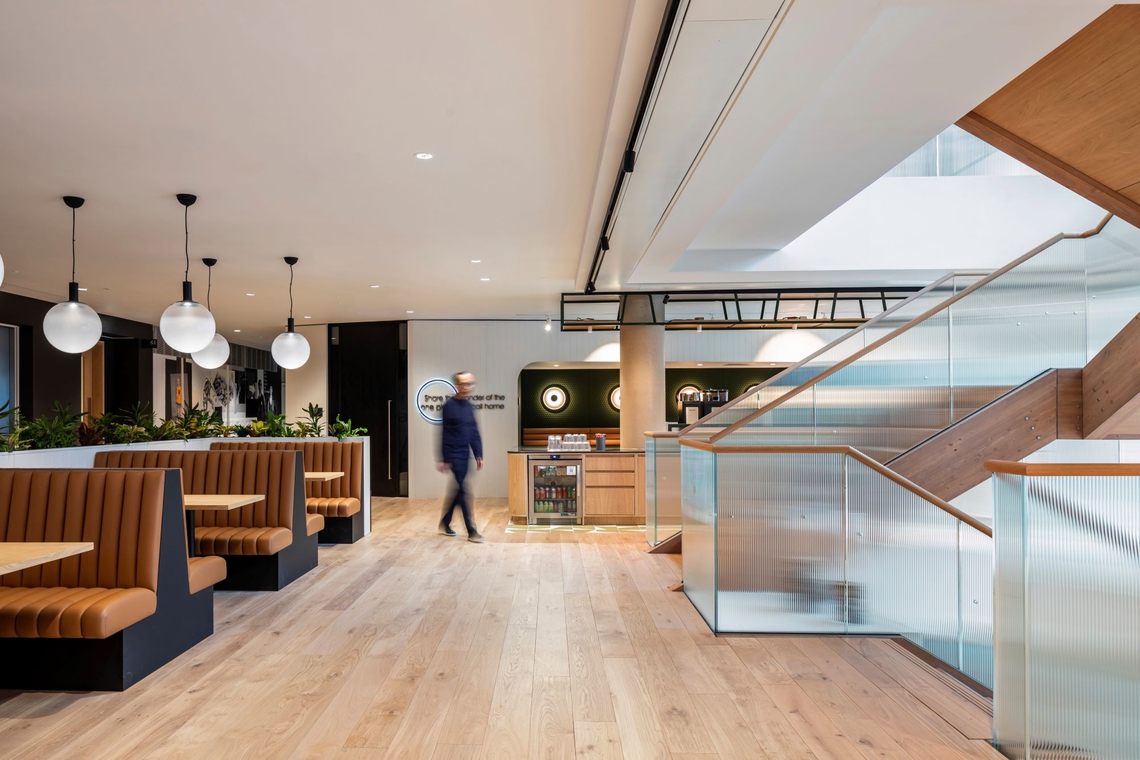
Photography credit \\ Ed Reeve
Tech that Builds, Not Replaces, Relationships
While remote collaboration tools are here to stay, Amber sees exciting potential in how tech can augment our ability to form real relationships.
“By automating routine tasks, AI is freeing up more time for employees to engage in face-to-face conversations and creative problem-solving,” she notes. She imagines a near future where AI assistants help match employees for cross-functional meetups based on shared interests or project needs. Add in AR and VR, and even hybrid teams can build bonds more intuitively.
But no matter how advanced the tools become; one thing remains clear: the workplace must be a human place.
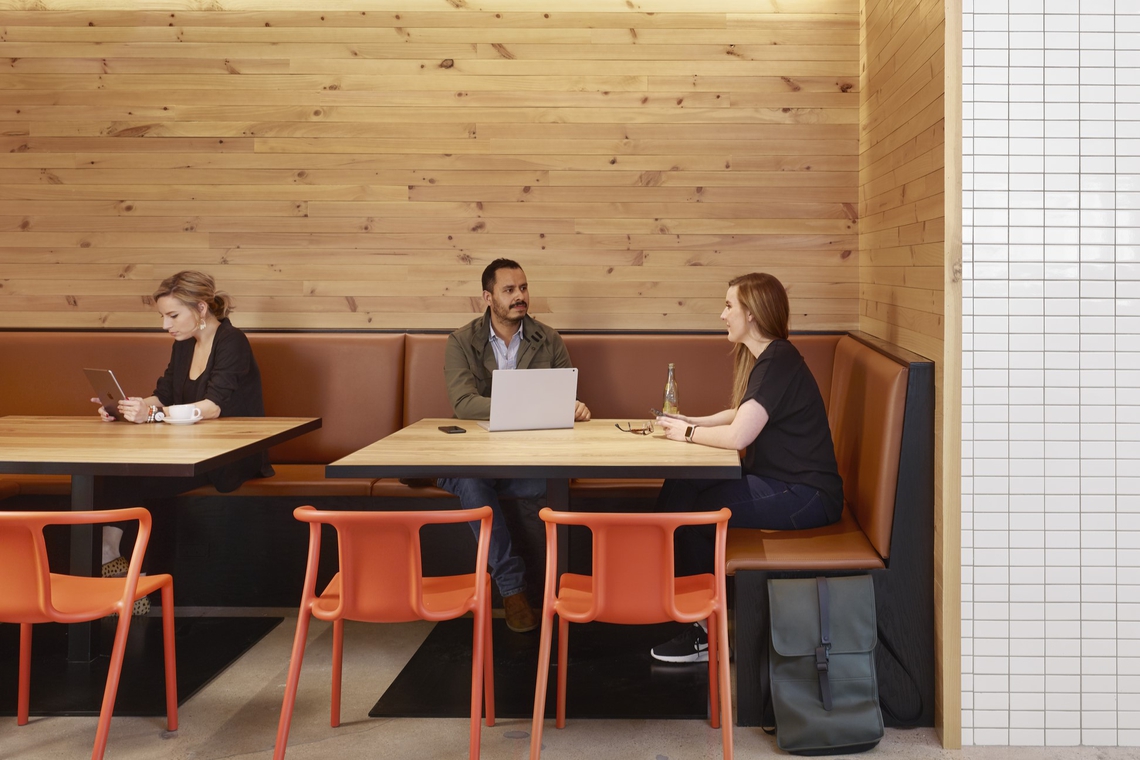
Designing for What Matters Most
Amber’s perspective is a timely reminder that designing for relationship-building isn’t just about adding a ping-pong table or café - it’s about intentionality, empathy, and a commitment to making people feel seen, heard, and connected.
In a world where people can work anywhere, workplace designers must create spaces that don’t just bring people in - but bring people together.
And as Amber puts it, “When you ask ‘What do you like most about your job?’, you often hear ‘the people.’ So how can we design workplaces that build and maintain those meaningful professional relationships?”
By treating connection not as a perk, but as a principle.

